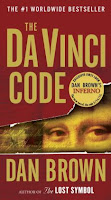Ender’s
Shadow is a companion novel to Ender’s Game which is told from the perspective
of one of the other students in Battle school. I had a tough time deciding which book I
wanted to read after Ender’s Game, and after some contemplation I went with
Ender’s Shadow. (There are over 7 books
in the series, covering the period of time before the bugger war, during
ender’s time as a launchie, and many books in the aftermath).
The main character is Bean, a tough
little orphan from the streets of Rotterdam.
Among the orphans living on the street, some of the bullies are forming
“families” to curry favor at the soup kitchens.
This idea was thought up by Bean, and his family is being run by
Achilles. Achilles is a tough cripple
with a big chip on his shoulder. He is
wary of Bean, and makes it obvious that he will do whatever it takes to be in
charge. Bean plays dumb to avoid the eye
of Achilles, but ends up being noticed by Sister Carlotta. Sister Carlotta is working for the IF, and she
has been testing orphans for years to see if they have what it takes to be
placed in battle school. Bean’s talents
are noticed immediately, despite his best efforts to hide his intellect, and he
soon finds himself in battle school.
Bean’s aptitude puts him in contention with Ender for Commander. Similar to Ender, he is rigorously challenged
and also excels in his studies. Bean
also pushes back against the IF, and does a lot more spying to discover the
inner workings of battle school. Bean
finds himself in Ender’s army and becomes a very reliable teammate, in and
outside of battles. In addition to Enders
storyline, Bean and Sister Carlotta are actively searching for where Bean came
from and the mystery of his intelligence.
I’m very
glad that I decided to read this book in the order that I did. Since all the activities of Ender’s Game were
fresh in my mind, it was great to read the same story from a different
perspective. The reader gets a behind
the scenes view of the competition between Bean and Ender, and how the
Commander’s in battle school struggled with the decision of who is the
best. Some of the events from Ender’s Game
are also reexamined, which gives us a more in depth view of what was going
on. By the end of the book, Bean was
definitely a memorable and well developed character. I would definitely check this book out if you
enjoyed Ender’s Game.
Rating: 4 out of 5 Bunsen Burners
Up Next: Speaker for the Dead by Orson Scott Card












.jpg)








